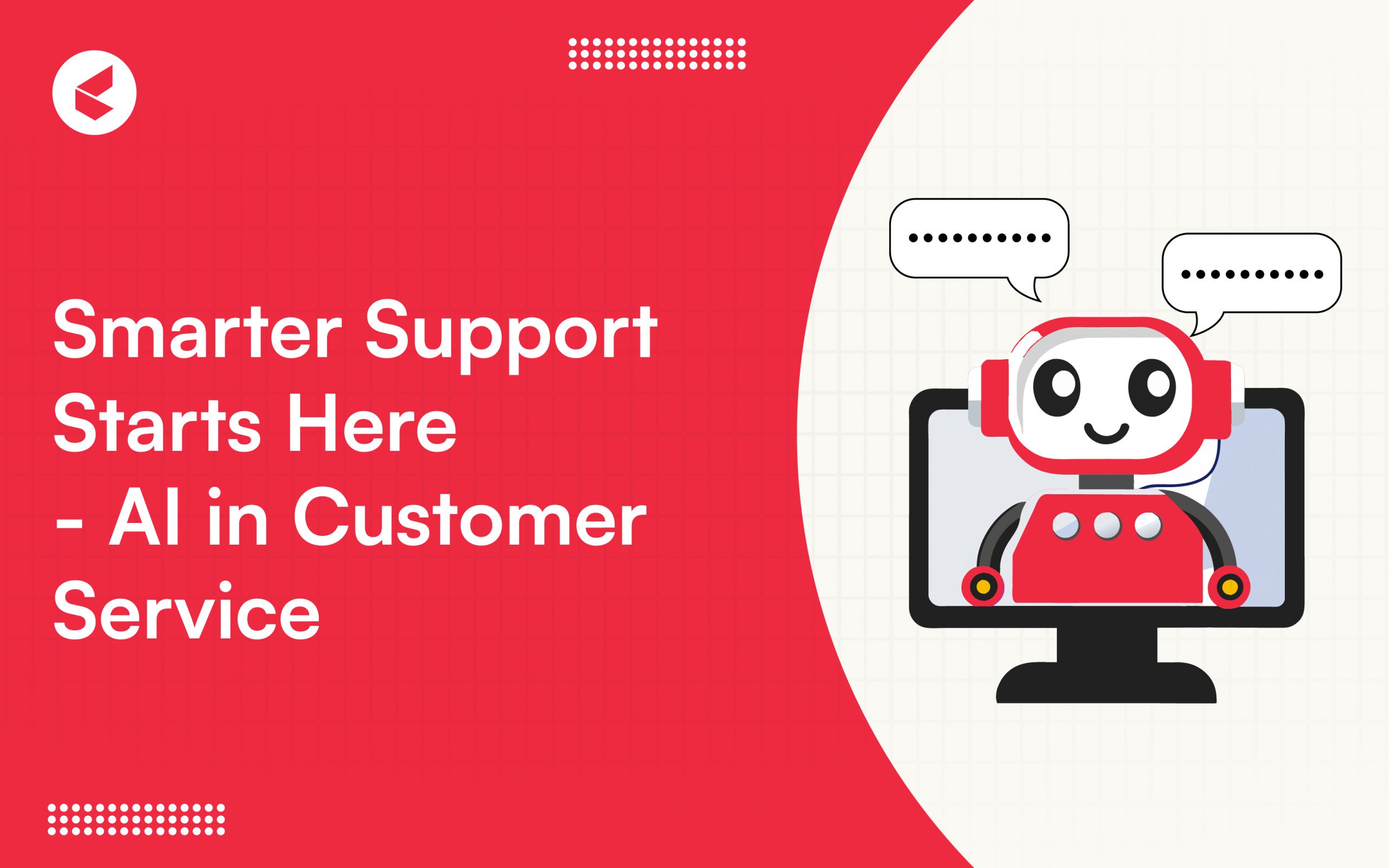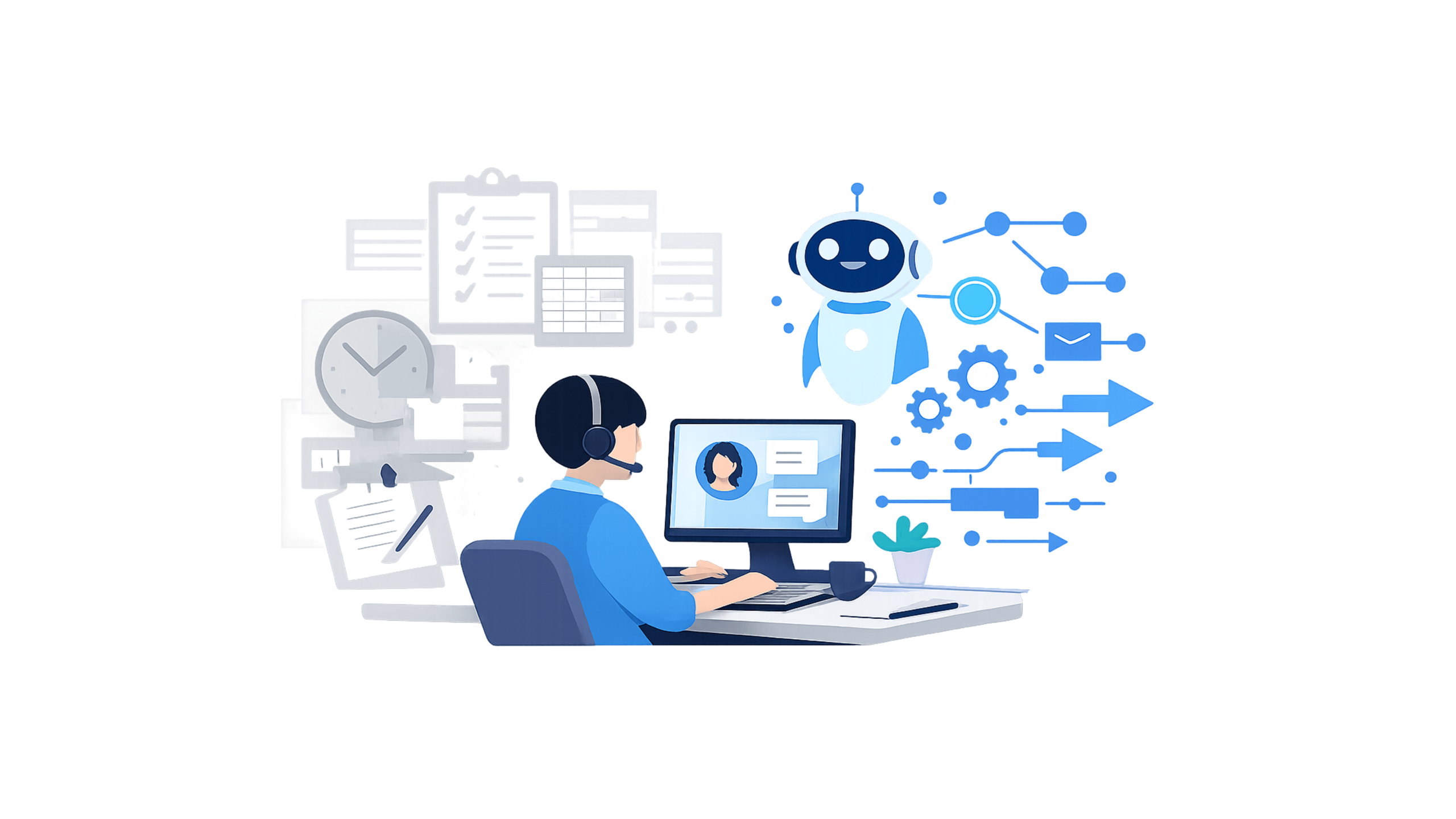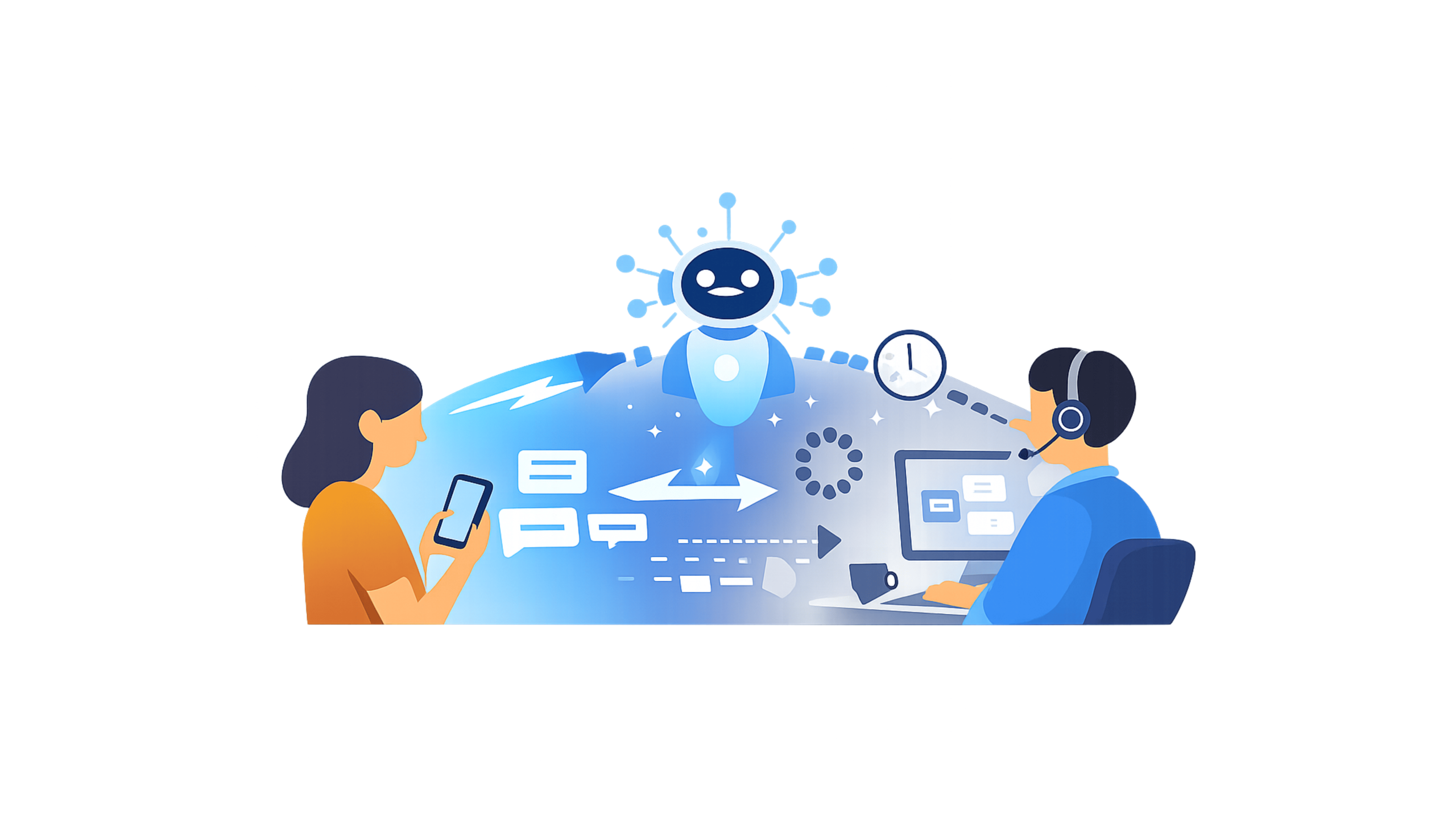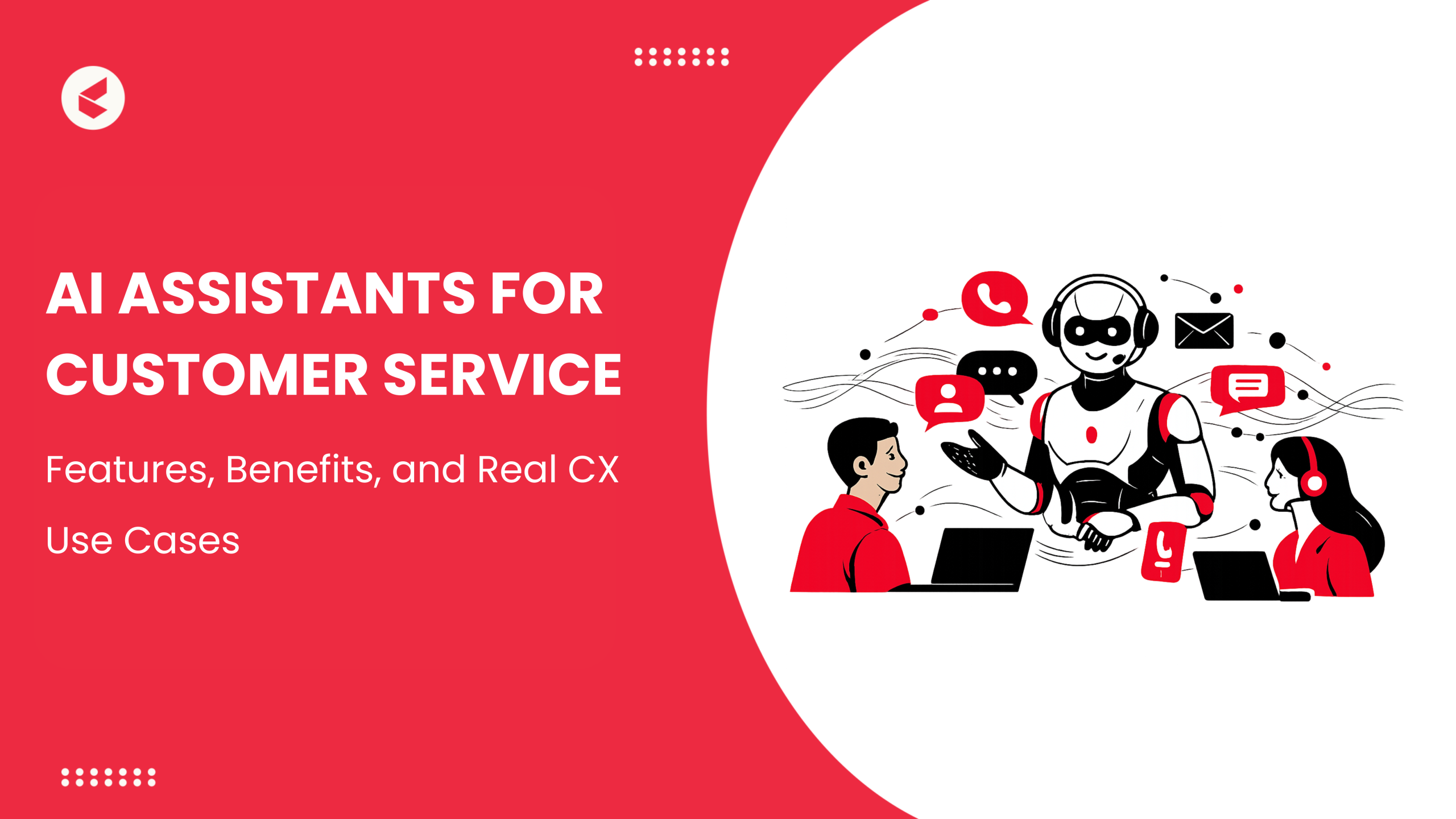Introduction: AI in Customer Service
“Always deliver more than expected.” – Larry Page, Google (Co-Founder).
Truer words haven’t been spoken in the context of customer service. When it comes to going above and beyond, AI helps you go the extra mile in customer service through applications like chatbots and smart assistants.
In fact, the 2023 Global Customer Experience Report highlights that 77% of top performers say that AI is meeting and exceeding their expectations in customer experience results.
AI has also been voted the #1 enabler for future strategies in customer experience (and employee experience as well). So, let’s understand the role of customer service AI tools in the context of modernized customer service.
Top AI Innovations in Customer Service
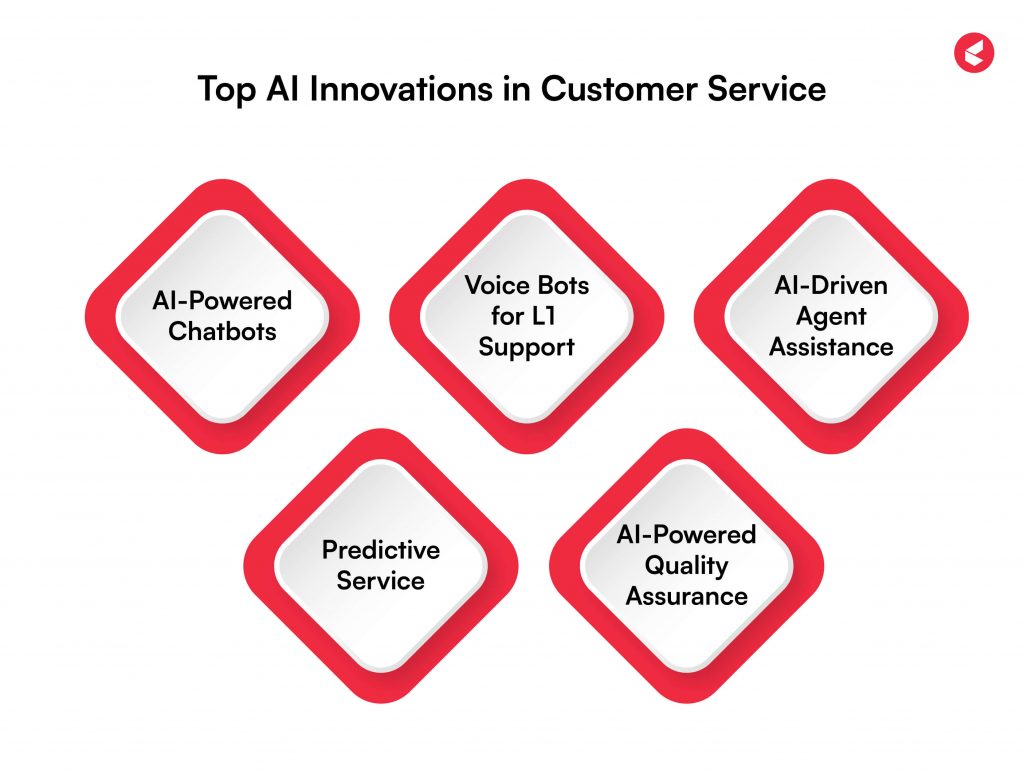
AI has become critical in the modern customer service landscape. According to a Marketingcharts report, 60% of service professionals believe that Artificial Intelligence can help predict customer behavior and needs.
Innovations in customer service AI have improved the quality of customer service businesses provide. Let’s have a look at some of the top innovations:
1. AI-Powered Chatbots
According to a TechReport study, around one out of six individuals gets help from an AI-powered chatbot rather than human customer service. This growing use is because of the increased personalization they are now offering to customers.
AI-powered chatbots are trained on large language models and use Natural Language Processing (NLP) to understand the context and intent behind a customer’s query.
It enables them to provide contextual, relevant support using conversational language that humanizes the interaction. This eliminates the robotic feel of a conversation and enhances the customer experience. Looking ahead, multi agent AI can take this even further by enabling multiple specialized agents to collaborate behind the scenes, handling complex queries more efficiently and delivering faster, more accurate responses.
2. Voice Bots for L1 Support
Voice bots are the more rudimentary versions of voice assistants, but they are highly capable of deflecting basic queries from reaching service agents. Recent innovations in AI voice technology and neural voices have improved how voice bots sound and interact with humans, making the exchange more natural and conversational.
These AI-powered voice bots govern IVR (interactive voice response) menus to provide interactive support to customers through voice activation. For example, the customer can simply “talk” to the voice bot using one- or two-word commands to move forward in the self-help menus.
3. AI-Driven Agent Assistance
One of the most powerful innovations in the AI customer service niche is the emergence of AI-backed agent assistance. Intelligent algorithms work behind the scenes to gather and understand customer data for any ongoing call and quickly summarize the key insights on the screen.
Armed with these quick insights, the agent is able to deliver personalized, relevant, and contextual service to the customer. AI-powered agent assistance also provides conversational prompts and next-step suggestions to help agents create a good customer service experience. Using AI Agent software can further enhance these capabilities by streamlining workflows, offering real-time guidance, and ensuring consistent, high-quality support across all interactions.
4. Predictive Service
Artificial Intelligence-powered tools analyze customer data in depth to understand trends, patterns, needs, pain points, and other service aspects in great detail. The algorithms then make several predictions about anticipated customer behavior in the near future and suggest strategies or recommendations to help the company manage them better.
This service strategy is an excellent approach towards risk mitigation with flagged customers who are known to raise issues more frequently than others.
5. AI-Powered Quality Assurance
Quality assurance in customer service is often subjective and dependent on human evaluation. This could introduce judgment and bias, skewing the quality standards and ultimately hampering customer experience.
Recent innovations have powered AI-based tools to undertake quality assurance objectively, applying the same set of standards and protocol to each service delivery and rating it with fair quality scores.
Key Benefits of AI Customer Service

Customer service agents who use AI-powered tools are able to provide a better overall experience to their customers. The advantages of using customer service AI are:
1. Enhanced Productivity
The National Bureau of Economic Research highlights that the use of Artificial Intelligence tools in customer service enhances agent productivity by 14% on average. For newer employees and staff, this figure increases to 34%. AI-based customer service tools assist agents in working faster by integrating seamlessly into their workflows.
Agents can use these tools to summarize customer conversations, quickly access relevant help resources, gain insight into customer issues and histories directly on-screen, and much more.
2. Higher Efficiency
According to 80% of operations managers, AI and automation play a big part in removing drudgery and repetitiveness from agent interactions.
AI assists with searching the knowledge base for specific information, reducing app switching, automatically routing tickets to the right agents, and manually typing responses, making tasking significantly easier and more efficient.
3. Better Personalization
AI has the power to gather and analyze large amounts of customer information quickly. It helps AI-powered customer service tools understand customer preferences and summarize them for the agent.
It helps deliver a more personalized experience through better recommendations, relevant responses, customized offers and discounts, and a more personal service experience.
4. Operation Optimization
AI in customer service streamlines operations. For example, agents can use AI to analyze customer sentiment on calls or chats and provide guided recommendations that drive the conversation. Agents can also use AI to predict if a conversation could potentially lead to an escalation and take appropriate action to prevent it.
5. Less Burnout
AI automates several repetitive and background tasks for customer service agents, reducing the workload they must face every day.
For example, AI automatically sends standard email replies or welcome messages, eliminating that job from the agent’s list. This helps agents feel more focused and reduces burnout risks.
9 Ways to Utilize AI Customer Service
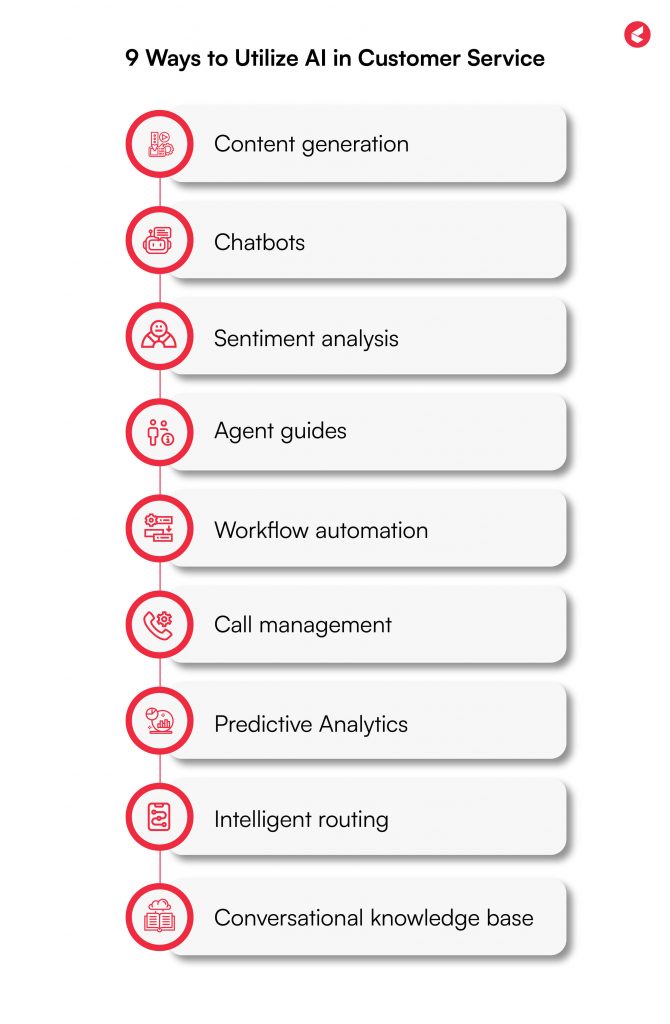
AI has the potential to transform operations across all arms of customer service – whether you are in a contact center or on the ground. Here are nine creative ways to use AI in customer service:
1 . Content generation
Use generative AI to analyze customer conversations and extract relevant details to generate context-aware, natural responses. Augment this operation by connecting the AI tool with your CX system to enhance conversation personalization. It humanizes the customer interaction and improves its quality.
2. Chatbots
Employ AI-powered chatbots to handle basic queries such as order status confirmation, return requests, refund inquiries, etc. Chatbots deflect these basic queries from reaching an agent when they can be productively engaged elsewhere in more complex customer service tasks.
3. Sentiment analysis
AI is capable of identifying keywords, intonation, and emphasis to gauge customer sentiment fairly accurately. Apply sentiment analysis to all customer conversations, whether chat or call, to understand how satisfied your customer feels from an exchange. It helps you identify how you can improve your service.
4. Agent guides
Agent assistance tools are live AI applications that deliver prompts and suggestions during ongoing conversations. These prompts help the agent steer the conversation favorably with deep customer insights, background, history, and context. They personalize the interaction more and help enhance the customer experience.
5. Workflow automation
Use Artificial Intelligence to automate several customer service tasks, such as summarizing conversations to get the gist. This helps agents quickly gain key insights from a conversation and proceed with service without further delay. Also, use customer service Artificial Intelligence tools to automate customer data entry into contact center systems.
6. Call management
Sometimes, self-help is not enough to resolve customer queries, necessitating engagement via phone calls. Apply AI to manage customer calls effectively by writing wrap-up summaries to understand how agents can handle similar calls better in the future.
7. Predictive Analytics
Proactive service relies on accurate predictions of customer needs. AI algorithms help you analyze customer data like shopping patterns and purchase history to predict the services they will eventually need based on these patterns. This enables agents to go the extra mile.
8. Intelligent routing
Employ AI to assess incoming customer queries for their nature, complexity, and urgency and route them intelligently to the right agent. The customers get to speak to a knowledgeable agent right from the start, improving their service experience. It helps reduce waiting times and enhance first-call resolution.
9. Conversational knowledge base
Implement a conversational knowledge base that allows customers to search a vast repository using conversational terms or keywords. This is similar to searching for information on Google.
Key Considerations and Challenges When Implementing Customer Service AI
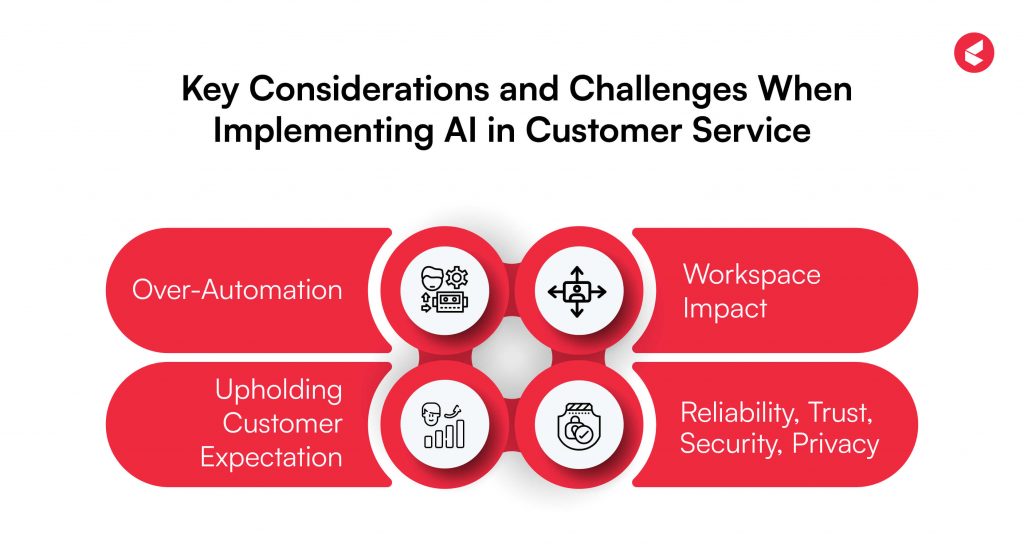
Did you know that AI will drive 95% of customer interactions by the year 2025? The proliferation of AI in customer service to such a huge extent warrants several considerations before you can implement it in your organization.
Let’s discuss four major challenges and the solutions that you need to consider when deciding to get AI customer service tools.
1. Over-Automation
Often, when businesses think about implementing AI, they think about automating every process. However, human involvement is pivotal at several touchpoints in customer service.
Therefore, the first consideration is understanding that automation and feature selection depend on two things: need and budget. AI is expensive, and every added feature costs extra. Carefully consider the extent of automation and AI intervention you require in your service operations before selecting a solution.
2. Upholding Customer Expectation
All AI-powered tools require prior training and priming before they can generate accurate results and fulfill customer expectations. The challenge is to train the AI systems so that they can handle customer queries effectively without irrelevant responses that could frustrate the customers.
Consider high-quality, vetted datasets so that the AI algorithms can be trained to be effective. Use real-world customer interaction data to train the AI systems, especially when applying chatbots and voice bots.
3. Workspace Impact
Reports show that 66% of leaders believe they would not hire someone who lacks the proper expertise to handle AI-based solutions. This skill gap could potentially lead to an investment disaster as your service agents fail to understand the tools or use them to their own and the company’s benefit.
As you implement Artificial Intelligence in your customer service teams, train your employees and staff to use it effectively. Conduct regular seminars and workshops to help your employees ease into the new systems. Leverage push notifications to deliver handy tips that empower them to use the tools better.
4. Reliability, Trust, Security, Privacy
For all its accuracy and benefits, AI is not completely reliable. Its trustworthiness depends heavily on the quality of training datasets. If the datasets have biases, the AI replies and results will reflect them and may even amplify them.
Another concern is customer data privacy issues. Global data protection regulations like the GDPR require organizations to treat customer data in a certain way. When implementing AI-based tools, you must ensure that they are regulation-compliant.
How to Get Started with AI in Customer Service?
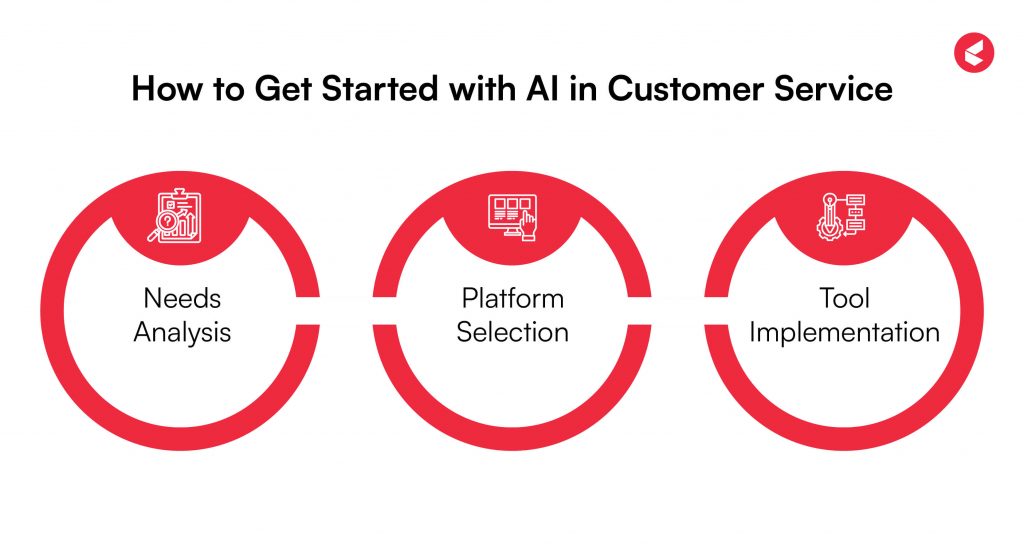
Enhance your service team’s efficiency and boost customer satisfaction by implementing generative AI customer service tools in the following way:
1. Needs Analysis
Conduct a needs-analysis of your customer service department to understand the kind of features and automation capabilities you require from the AI customer service tool. For example, if the call routing is mismanaged, you may want to look at tools that specialize in automated routing.
Consider the following:
- The specific customer service tasks that require improvement.
- Your goals for the AI-based customer support tool (such as improving agent productivity, providing self-service, etc.)
- The success metrics you will measure, such as increased CSAT (Customer Satisfaction Scores), decreased call resolution times, etc.
- These considerations help you understand your objectives for the change and what to look for in the AI tool.
2. Platform Selection
You have a wide choice of Artificial intelligence in customer service tools available in the market. Consider the following aspects to make the best selection:
- Features: Look for AI tools that offer you features that align with the goals you identified earlier. For example, if you wish to enhance agent productivity, you should look for features that automate backend tasks for the agents.
- Scalability: It is wise to select a tool that allows for expansion and provides flexible scaling options. These tools grow with your business and are easily scaled up or down through integrations or microservices as needed.
- Integration: AI customer service AI tools can connect with CRMs and DXPs (digital experience platforms) to deliver a more holistic service experience to customers. Ensure that the tools you select are integration-friendly with your existing systems.
3. Tool Implementation
You can streamline the implementation process of your Artificial Intelligence in customer service tools by paying attention to the following:
- Gradual deployment: Stagger the implementation process in phases, releasing the AI features one by one. This helps your teams get used to the new interface steadily without disrupting the workflows all at once.
- Training: Ensure that your customer service team receives tool training at regular intervals to help them better use the AI tool.
- Monitoring: Go back to your goals and KPIs to check the metrics you want to improve with this AI tool. Monitor the system over time to observe its impact on these metrics. If the results are below expectations, you can make adjustments to improve them.
The Future of Customer Service AI
Artificial Intelligence is a powerful technology capable of transforming customer service in more innovative ways than chatbots and agent assistance. The future holds great promise for inventiveness. There are four ways in which AI will change the future of customer service:
1. Training based on GenAI
Generative AI will be used in service agent training to create complicated customer service scenarios and gauge agent response and performance. This will help train the service agents more holistically with different scenarios, preparing them to handle anything.
2. GenAI call scripts
Instead of working with static call scripts that disengage the customer, call agents will be equipped with GenAI-powered dynamic call scripts that update in real-time according to the conversation. This will help deliver a more relevant service without dragging a conversation through a static script.
3. Customer data insights
Today, businesses operate across multiple channels. Customer service will be powered by granular data and insights collected across all channels and collated on a single interface—made available at the agent’s fingertips.
4. GenAI FAQs
Instead of providing a static set of FAQs for customers to search through manually, GenAI will power dynamic FAQs. These FAQs are personalized according to the users’ brand history and update automatically as soon as any information changes.
Make Artificial Intelligence Your Customer Service Assistant with Kapture
In addition to the right expertise and skills, you need robust customer service AI tools to deliver excellent customer experiences across all your channels. Kapture CX offers you a robust suite of AI-powered features that integrate well with your existing ecosystem and elevate your operations to new efficiencies.
With Kapture’s full-width customer experience solution, you get access to omnichannel support, AI-powered self-service modules, intelligent agent-assist features, knowledge management, a full customer view, and much more.
Explore various nuances of Kapture CX’s AI in customer service products on the website today.
Request a demo today for 30% cost savings on your customer service!
FAQs
Yes, you can automate AI tools to categorize service tickets based on priority, department, complexity, nature of the ticket, or any other custom parameter.
AI in customer service tools automate repetitive tasks such as typing standard replies, sending follow-up emails, etc., to relieve service agents of burden and enhance their productivity.
AI tools in customer service give your business an edge in competition and streamline internal processes. Although it may not be necessary, AI is critically important for a business’s long-term growth strategy.
AI-powered chatbots and voice bots empower customers to navigate through service portals and find what they need quickly
